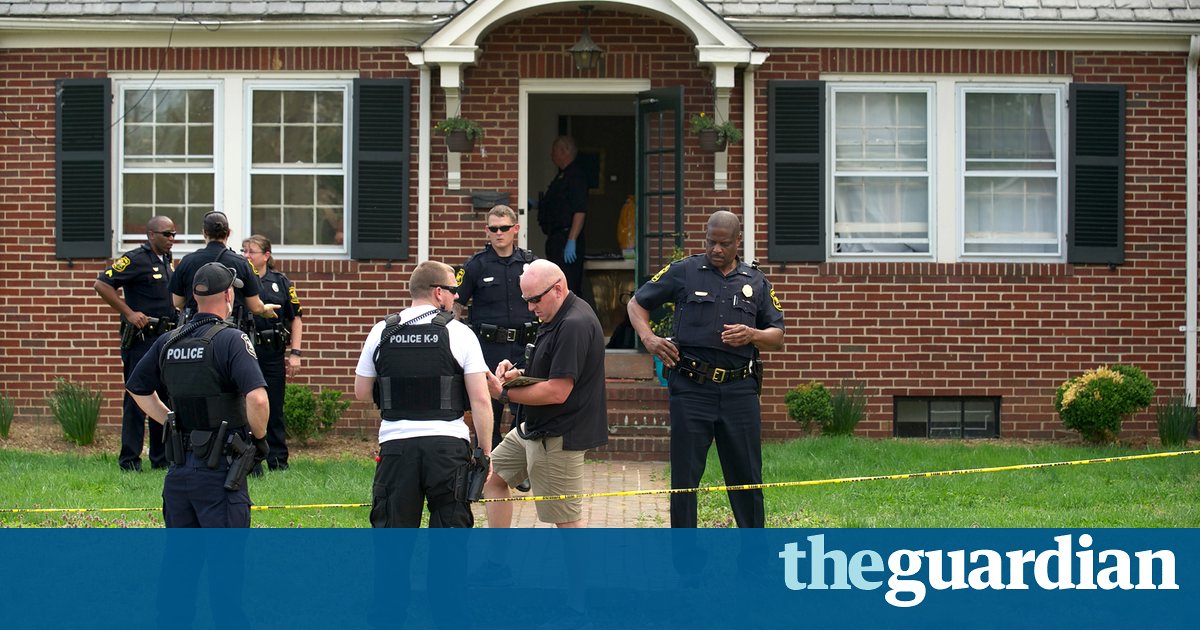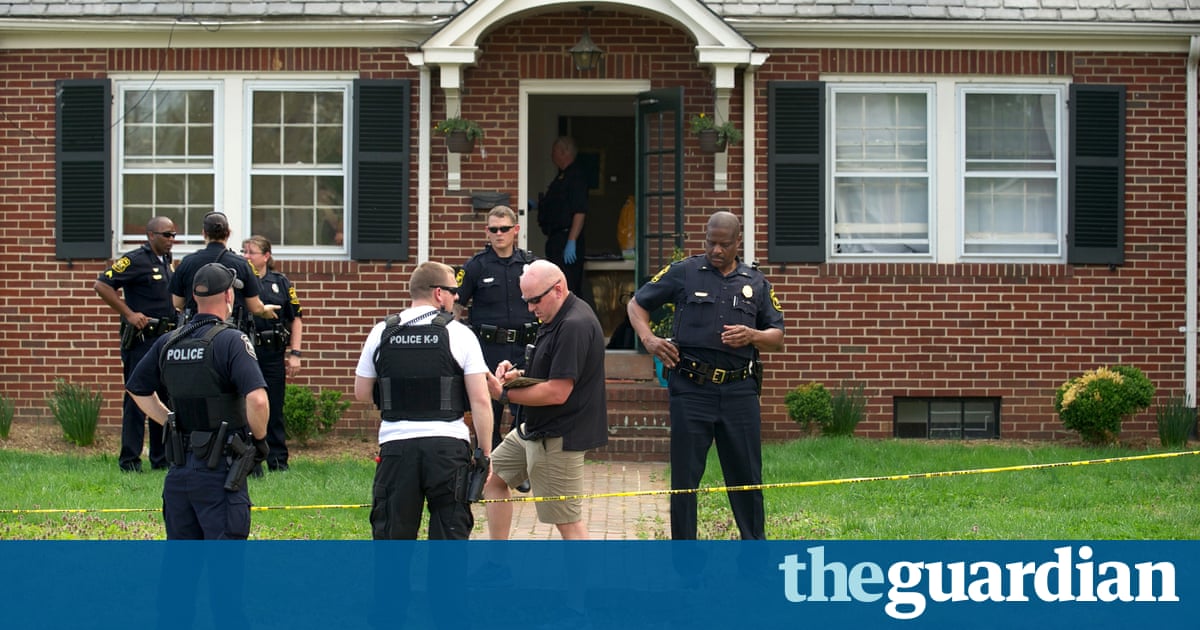Murders up 10.8% in biggest percentage increase since 1971, FBI data shows

Rising violence in 2015 driven by increase in murders of black men and gun crime, as experts brace for political hysteria amid 2016 election

Murders in the US rose10.8% last year, the biggest single-year percentage jump since 1971, according to data released Monday by the FBI.
The rising violence was driven by an increase in the murders of black men, and by an increase in the number of gun murders. At least 900 more black men were killed in 2015 than in 2014, according to FBI data.
There were roughly 1,500 additional firearm murders in 2015. No other type of weapon saw a comparable increase. The number of knife murders dropped slightly.
The percentage of murders committed with guns increased to 71.5%.
The net increase in murders, which follows a two-decade downward trend, erased the gains of the past few years, and put the number of murders back at 15,696, about the same number as in 2009. Murder and violent crime are still dramatically lower than they were at the peak of the violent crime wave of the late 1980s and early 1990s. The national murder rate last year was about half what it was in 1991.
Even as murders rose, the countrys overall crime rates did not increase as substantially. There was a 3.9% increase in the estimated number of violent crimes, but a 2.6% decrease in the estimated number of property crimes.
Speaking at a violence prevention conference in Little Rock, Arkansas, attorney general Loretta Lynch said that, despite an overall increase in violent crime, 2015 still represented the third-lowest year for violent crime in the past two decades.
Her prepared remarks did not mention the 10.8% increase in murders.
We still have so much work to do, Lynch said. But the report also reminds us of the progress that we are making. It shows that in many communities, crime has remained stable or even decreased from the historic lows reported in 2014.
A third of the murder increase was driven by upticks in just ten larger cities: Baltimore, Chicago, Houston, Washington DC, Milwaukee, Philadelphia, Nashville, Kansas City, Missouri, St Louis, and Oklahoma City.
Baltimore saw the greatest increase in murders, with 133 more people killed in 2015 than in 2014, pushing the city to its highest-ever murder rate. Some of Americas largest cities, including New York and Los Angeles, saw their murder numbers remain near historic lows in 2015.
Black men and women face much less violence today than they did in the early 1990s, belying Donald Trumps claim last week that our African American communities are in the worst shape theyve ever been … ever. Ever. Ever.
Despite steep declines in violence since the 1990s, though, the murder rate for black men and boys is still much higher than for other Americans, and it increased slightly last year, according to a Guardian analysis of FBI supplementary homicide data and census data. The supplementary homicide data includes a racial breakdown of murder victims submitted by most, but not all, law enforcement agencies.
In 2015, black men were about nine times more likely to be murdered than white men, and black women were three times more likely to be murdered than white women, according to the analysis.
Compared with the early 1990s, when the biggest contributors to the crime increase were the countrys largest cities, its slightly smaller cities that are having the biggest impact on rising murders, said John Pfaff, a Fordham University law professor who studies criminal sentencing and incarceration. The 10 cities that drove a third of the murder increase only account for 13% of total murders in the US, he noted.
There is no consensus yet on what factors might be driving a sharp increase in murders alone, but crime has become a politically charged election issue, and the uptick will probably figure in Mondays presidential debate.
Crime trend experts said they expected politicians to overplay the significance of the new numbers and to react with hysteria.
You lost 50lb. You gained back a couple. Youre not fat, said Jeffrey Butts, the director of the Research & Evaluation Center at John Jay College of Criminal Justice. That doesnt mean you shouldnt look at your behavior, because the trend is not good.
In St Louis, which already had one of the highest murder rates in the US, murders increased again last year. Last year, 143 of the citys murder victims were black men and boys killed with guns, according to data from the police department. Local residents were not optimistic that a debate over a national murder increase would make them safer.
How do we use that data to elevate the consciousness of our community? How do we use that data to provide the opportunity for people to get meaningful jobs, with livable wages? said Jeffrey Boyd, a St Louis alderman who has lost three young male relatives to gun violence since 2003.
I have no confidence in our federal government that they will provide an extra dime for anything.
Advocates for criminal justice reform said they worried the one-year uptick would fuel calls for a return to damaging, tough-on-crime policies. The US has one of the highest incarceration rates in the world, and both violent crime and mass incarceration disproportionately affect black Americans.
The human cost of an overreaction to the murder increase could be a lot bigger than the toll of the rising violence itself, Pfaff said. He said he expected the increase to prompt calls for more arrests and more prison time.
The wealthier white Americans whose votes help determine crime policy dont tend to be those who feel the costs, Pfaff said.
Early data from large cities this year suggests that 2015s uptick in murders may not be a single-year increase. A report from the Brennan Center, analyzing murders in 30 large cities this year, projected an additional 13.1% increase in the murder rates for those cities in 2016, with most of that increase being driven by just three cities: Chicago, Baltimore and Houston. Together, the national large city increases in 2015 and 2016 were projected to drive a 31.5% increase in the murder rate compared with 2014.
There is no evidence of a national murder wave, yet increases in these select cities are indeed a serious problem, the Brennan Center report concluded. Chicago alone has seen a close to 50% increase in shootings and murders this year.
The FBI director, James Comey, has repeatedly drawn a connection between increasing violence and a change in how the police are doing their work due to the continuing nationwide protests over police killings of black citizens.
In todays YouTube world, are officers reluctant to get out of their cars and do the work that controls violent crime? he asked in 2015, describing a chill wind that has blown through law enforcement over the last year.
In May, he suggested the increasing violence could be related to marginal pullbacks by lots and lots of police officers, and said that police leaders across the country had seen a change in how their officers do their jobs.
Barack Obamas administration has repeatedly rejected any connection between protests over police violence and increasing murders. But a Justice Department-funded report on the 2015 murder increase concluded that there might be some connection between public anger over police killings and an increase in community violence.
Criminologists caution that crime and violence are highly local, and driven by a tangle of so many different factors that it is nearly impossible to say exactly what causes a given increase or decrease. Crime statistics are also easy to over-dramatize. Murder numbers in a small town, for instance, can be dramatically distorted by a single incident with multiple casualties. A town that typically sees a murder a year will see a 100% increase in murders if it ends the year with two.
New York City, which saw more than 2,000 murders a year in the early 1990s, saw just 352 last year, according to New York police department data. Los Angeles, which saw more than 1,000 murders a year in the early 1990s, has seen fewer than 300 in recent years.

Trump has blamed Obama and his administration for a rollback of criminal enforcement that has made the country less safe.
This criticism is not supported by the FBIs murder data. Murders have declined through most of Obamas two terms, with a serious uptick only in his second-to-last year in office. Between 2008, the year before Obama took office, and 2014, murders dropped, with 2,000 fewer Americans murdered in 2014 than in the last year of George W Bushs administration.
Crime experts also cautioned that a single-year uptick was not a trend. Its the curse of success. Because were doing better, a similar absolute change will look worse, Pfaff said.
Despite a general downward trend over the past decades, nationwide murder numbers have increased in some recent years. In 2005, for instance, murders increased by 3.67%, according to FBI data, then increased a further 3% in 2006.
In October 2006, the Police Executive Research Forum released a report warning the country about a gathering storm of violent crime that threatens to erode the considerable crime reductions of the past.
Violent crime in many of the nations cities, from one coast to the other, has begun to spike upwards, the report argued. The percentage of violent crime in America had the largest single-year increase in 14 years.
The next year, murders resumed a downward trend.
Everyone started freaking out. It was a two-year thing, Butts said.
Criminal justice reform is one of the greatest civil rights efforts of our time, said Rashad Robinson, the executive director of Color of Change, the nations largest online racial justice organization.
Trump and other politicians, he said, have started us down a path to undo long-fought gains in criminal justice reform, and we should not let the positive momentum be derailed by a lack of facts, by fear, by racism and by demagoguery.
Even Heather Mac Donald, a conservative crime analyst who saluted Trumps law and order focus, said in July that it was inaccurate to blame federal crime policy for murder increases.
In general, the president and the federal government have very little power to determine the countrys response to crime and violence. The country has 18,000 local law enforcement agencies of different kinds, including more than 12,000 local police departments, which are largely independent from federal control. Most power to determine crime policy is in the hands of state legislators, and local mayors, police chiefs and prosecutors.
Trump and Clinton have outlined competing visions of violence prevention,with Trump touting a tough-on-crime approach, and Clinton focusing on the need to reform police treatment of black Americans and reduce gun violence through tougher gun control laws.
These contrasting views have symbolic importance, but neither Trump nor Clinton would have much direct influence, as president, over how cities and states address violence. The justice department can use federal funding as a carrot or stick for local departments to adopt different policies, but this is a fairly limited tool for pushing top-down changes.
Jamiles Lartey contributed reporting from St Louis
Read more: https://www.theguardian.com/us-news/2016/sep/26/rate-murder-fbi-increase